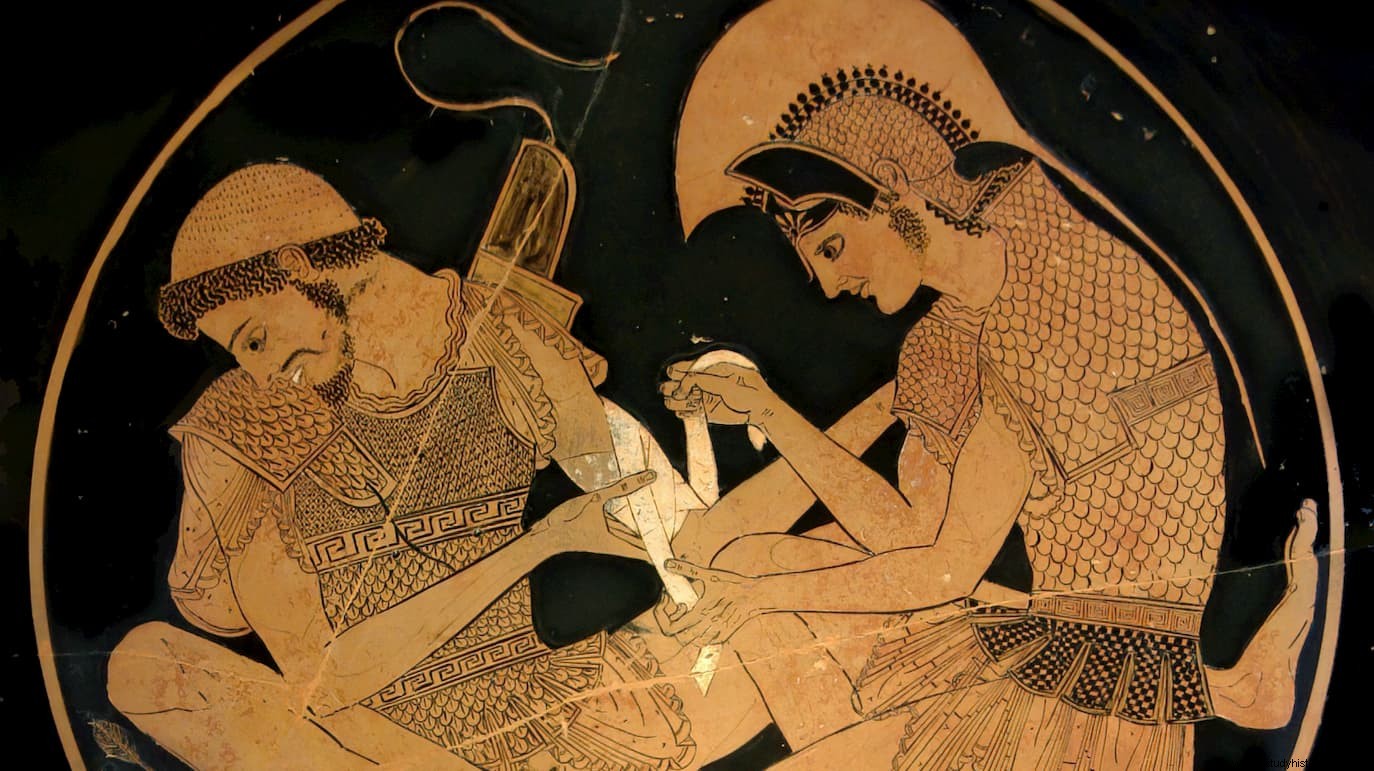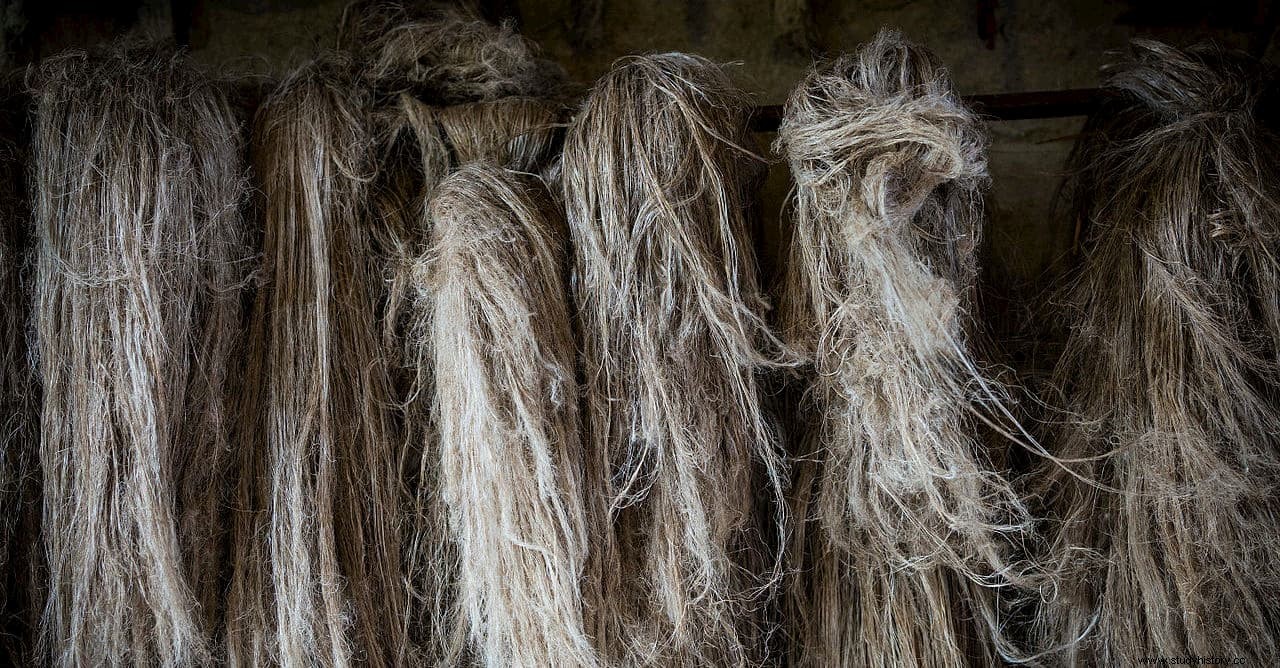In general, people have a somewhat stereotyped perception of the iconography of the warriors of Ancient Greece, ignoring that the Hellenic panoplies varied greatly from those heavy Mycenaean bronze plate armor to the absence of any body protection in later centuries - except the pilo type helmet s-. Thus, the image that has made the most impression is that of the classic hoplite, with his Corinthian helmet, his greaves and his aspis . The armor that protected his torso, yes, varied. If the Spartans always remained faithful to their traditional muscled bronze armor, the Athenians and others diversified the thing by also adopting a different model, the one most often seen in illustrations and movies, which had its moment of splendor in the Macedonian army of Alexander the Great . It's called a linothorax.
As can be deduced from its name, it was a breastplate made of linen, between ten and twelve layers glued together by means of some natural adhesive, whether it was of animal origin, such as hoof keratin, or vegetable, such as resin. However, some experts believe that sweat or rain would degrade the binder as it is soluble in water, so some extra element would be needed and they point to the possibility that the linothorax was actually made of hardened leather. Others suggest that the layers would not be glued but superimposed, forming a padding like that of the medieval gambesons (although the Scythians already used them in the fourth century BC) or that of the escaupiles (ichcahuipilli ) Mesoamerican cotton.
It is difficult to know for sure because, being perishable materials, no specimen has remained and the only similar piece, found in a burial in Vergina (a small town in northern Greece that was once called Aigai and was the first capital of Macedonia; the tomb of Philip, the father of Alexander, was discovered there), was not made of linen but of iron plate trimmed with gold. This leads archaeologists to think that it was nothing more than a copy of a linothorax probably made for ceremonial or religious purposes. In addition, a fragment with several layers of linen glued to it appeared in a Mycenaean tomb that could correspond to a linothorax, although this is speculation.
Because, indeed, everything is speculation. The linothorax would be a breastplate that wrapped around the wearer's torso above the chitonisko (the inner tunic), fastened by epomides or wide shoulder pads, adjustable separately thanks to two cords, which came together and rose at the nape, covering it. A zoma , that is, a leather or felt fabric, surrounded the waist serving as the base for an inner mesh metal sheet. Each layer would have been about five millimeters thick, although the ones inside were coarser. All this externally reinforced by a zoster or belt with metal plates. In its lower part it was finished off with the characteristics pteruges (wings), a skirt made of two layers of strips of linen or leather, unknown if riveted (in the style of the cingulus Roman) or forming part of the linothorax itself in a single piece, which had the purpose of protecting the groin and the thighs as the layers overlapped each other.

All this reduced by half the weight of a bronze cuirass, which could be around thirteen kilos. It is true that the one described would be a basic vision, since sometimes bronze plates were inserted between each layer and in some paintings one can even see composite armor, linothorax covered with plates or scales, preluding what in Rome would be the lorica squamata , the typical protection of centurions and cavalry, especially in the republican period. In other words, uncertainty is the norm and everything described is always based on current reconstructions, which in the absence of information have been made in two versions:padded and laminated (the tests, by the way, show that the second would offer greater protection).
And it is that the only available sources are, as we say, the artistic representations:pictorial decoration of the ceramic pieces, statues and reliefs, mosaics... There are hardly any written and the few that exist are mere references, with hardly any description. The Iliad of Homer would be the first of them, when describing the equipment of Ajax Oileida, the Minor , one of those who hid inside the Trojan horse (the one that found and raped Cassandra), of which he says that "his armor was made of simple linen" ; a few pages later he also ascribes one to Amphius, the brother of Adrestus, both sons of the seer-king Merope. They also mention the Herodotus linothorax (“linen corselet” he calls it, referring to the second of his Nine History Books to an offering made in honor of Athena), Xenophon (who assures that it was also used by Scythians and Calibes), Titus Livy and Strabo, to name only the most important.
Homer's account implies that this type of protection would be much older than it seems and would go back to the Mycenaean period. Now, when it really became popular was from the transition between the Archaic and the Classic, at the beginning of the 6th century BC, coinciding with the Persian Wars, the apogee of the Attic-Delic League. Then it declined during the Peloponnesian War because the demand for men made it necessary to recruit from the humble classes, without the resources to pay for armor, whether it was linen or metal.
It was finally recovered in the Hellenistic period (spreading especially in the 4th century BC, after the battle of Leuctra), to experience a second moment of splendor by equipping the Athenian hoplites after the military reforms undertaken by Iphicrates (who, in addition to revolutionizing to the army tactically, led to the introduction of other novelties such as the pelta or light shield, longer swords and spears, and the icratids , easy to put on and take off leather greaves).

The auction and song of the swan took place when a good part of the Macedonian phalanxes of Alexander the Great also adopted it, finally giving way to chainmail at the end of the following century (by then its use had spread throughout the Mediterranean). We know that Iphicrates wanted to lighten the weight of the peltasts (the light infantry), and the linen undoubtedly improved on that to the bronze. In fact, the hypaspists Macedonians (auxiliary infantry) were equipped with spolas , an even lighter type of linothorax (it may even have been a simple linen tunic).
In this sense, it is believed that the success it had among the Macedonian Phalangites was due to that lightness -very welcome in the very long marches that they had to carry out- and to a greater freshness for the torrid places that they had to cross in that endless campaign that reached the India, such as Anatolia, Egypt, Central Asia or the Near and Middle East, since linen is made of cellulose and can absorb up to twenty percent moisture, preventing clothes from sticking to the body with sweat.
Until not long ago, it was assumed that a linothorax was cheaper than bronze armor, but this belief has now been discarded because the work required to convert vegetable fiber into cloth is very laborious and, therefore, it would be an expensive product; we already saw how many soldiers could not afford it in the 4th century BC. However, its advantages outweighed the high cost, as it could resist sword cuts and broad-tipped arrows:these could penetrate the protection but, if they did not follow a direct path, once inside they deflected from one layer to another, stopping before reaching the skin.
Flax, on the other hand, didn't work as well at absorbing blows, so against heavy weapons it was less efficient. The fact that the Persians and their allies used swords, spears, and light axes (some Immortals also wore linothorax) could be another clue as to why the linothorax had its big moment in the Persian Wars and Alexander's conquests.
